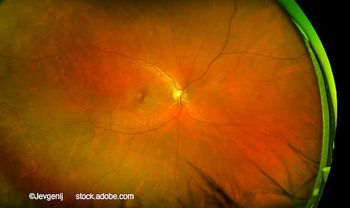
Study finds ethnic-related differences in CSLO parameters
Fort Lauderdale, FL-Significant differences in optic disc topography exist between ethnic groups, according to the results of a study analyzing parameters measured with confocal scanning laser ophthalmoscopy (CSLO) among subjects with European, subcontinent Indian, and African-American ancestries.
"These findings indicate the need for ethnic-specific databases to improve the sensitivity of CSLO for detecting glaucomatous damage," commented Christopher A. Girkin, MD, who was an investigator in the study. He reported the results at the annual meeting of the Association for Research in Vision and Ophthalmology here.
"The database in the Heidelberg Retinal Tomograph 3 (HRT3, Heidelberg Engineering) already has been customized based on these issues and is continually being updated to be more inclusive of ethnic-related differences that will improve its diagnostic performance," continued Dr. Girkin, associate professor of ophthalmology and director of the glaucoma service, University of Alabama at Birmingham.
All of the subjects included in the study underwent a comprehensive ophthalmic examination, standard achromatic perimetry, and CSLO using the HRT II with the same protocol. To be eligible for inclusion in the analyses, they needed to have normal visual fields, an IOP less than 22 mm Hg, no family history of glaucoma, and no evidence of other ocular diseases.
The CSLO parameters analyzed included neural retina rim area, optic disc size, cup area, linear cup-to-disc (C/D) ratio, and retinal nerve fiber layer (RNFL) thickness.
Comparisons were made between the three ethnic groups for each of those parameters and correlations were also investigated with age and optic disc size.
The results showed that the African-American, European, and Indian groups were similar with respect to the overall ranges of optic disc size (1.4 to 3.4 mm, 1.0 to 3.6 mm, and 0.88 to 4.1 mm, respectively). However, mean optic disc size was significantly greater in the African-American subjects compared with either of the other two ethnic groups.
In contrast, the Indian group had the lowest total rim area, and the difference was statistically significant comparing the Indians with both the African-American and European groups.
Corresponding to that finding, optic cup size was greatest in the Indian group, intermediate in the African-Americans, and smallest among the European eyes. The differences between the Indian group and both the African-Americans and Europeans were also statistically significant, Dr. Girkin reported.
A similar pattern was seen among the three groups in the analysis C/D ratio values with the Indians having the largest C/D ratio (0.49) followed by the African-Americans (0.45) and then the Europeans (0.4). RNFL thickness was similar in the European and African-American eyes, but thinner in the Indian eyes, and the difference comparing the latter group with the African-Americans was statistically significant.
Further analyses found no significant correlations between any of the CSLO parameters with age when the data were pooled or analyzed within each ethnic group. In analyses adjusting for the significant differences between groups in disc size, ethnic group-related differences in the C/D ratio and RNFL were no longer statistically significant. However, the significant differences in cup area and neural retinal rim area persisted between the Indian eyes and the other two groups.
Newsletter
Don’t miss out—get Ophthalmology Times updates on the latest clinical advancements and expert interviews, straight to your inbox.



















































.png)


